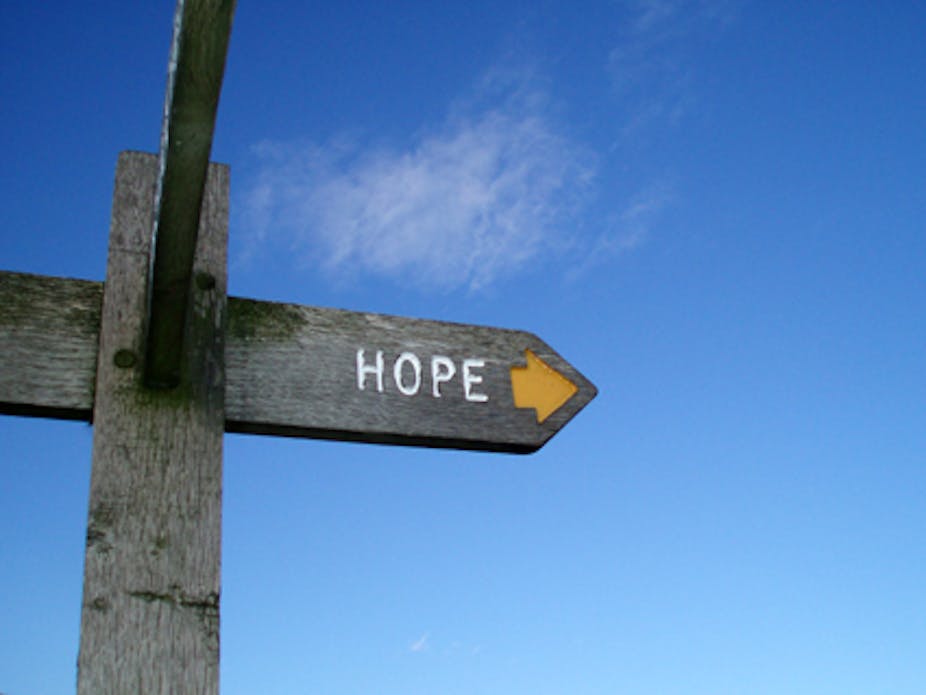Stem cell tourism is when people travel to another country to receive treatments unavailable to them at home. It exists chiefly because most stem cell “treatments” are unproven and not readily available from reputable local medical services.
Many Australians travel overseas for often ill-defined treatments for various conditions, including spinal cord injury, cerebral palsy, motor neurone disease and multiple sclerosis. Their destinations include China, India, Germany, the United States and Panama.
If online advertising and news reports are to be believed, stem cell tourism is a thriving industry.
It’s clearly a matter of broad public interest because both SBS (Insight Stem Cells — Hope or Hype? at 8.30pm, July 15) and ABC (Head First’s Stem Cell Highway at 8.30pm, July 16) are airing television shows about stem cell tourism and treatment this week.
Exploiting hope
ABC’s Stem Cell Highway, focusing as it does on the experiences of two “desperate” patients, is a familiar story of individual quests to find cures in the face of great obstacles.
It illustrates how people submit themselves to often-costly treatments without fully understanding their consequences, which includes families who bear the burden of the condition, treatments and invested hope.
But what do patients know about the treatments they receive? Exactly what are they told they’re buying? And, in any event, does it matter? Do promise, faith and hope trump reason and evidence when the only other available option is doing nothing?
Faith and miracle are the operative words here. Stem cell tourism is sustained because of a religious-like belief in the promise of the regenerative powers of stem cells.
While many trials for stem cell treatments are underway, most of them are at the very early stages of translation, and focused on safety. Proven effective treatments are limited to bone marrow transplantation for diseases of the blood and immune system, and corneal and skin grafting.
Many of the treatments sold are yet to show clinical efficacy. In many cases, it is unknown whether they are even safe. Few providers of the treatments have published their work in scientific journals.
Inadequate responses
Given the great optimism about stem cells and the paucity of actual cures, many scientists, clinicians and regulators are concerned that providers are exploiting patients’ hopes and vulnerabilities.
They fear people are submitting themselves to treatments that may result in great personal and financial risk, and that this may ultimately harm science itself. These fears are not unfounded since many people are undertaking such treatments (sometimes, a series of treatments) at considerable personal cost.
In Australia, both Stem Cells Australia and the National Health and Medical Research Council have produced guides to assist those contemplating treatment, but these may be insufficient.
Policy responses tend to frame the “problem” in terms of cavalier doctors who use regulatory loopholes to exploit desperate patients’ hopes. This fails to understand the complexity of the issues and the context in which the stem cell treatment market operates.
It’s too easy to blame unscrupulous providers and lax regulation while overlooking other factors underpinning the market.
Seeking the silver bullet
We have examined patients’ experiences and treatment journeys in light of the dynamics of the global stem cell tourism market and “the political economy of hope”.
Our work suggests the market is sustained by many factors including the rise of online direct-to-consumer advertising, deregulatory policies, government-endorsed medical tourism, and widespread optimism attached to the promises of new medical technologies.
Such optimism covers everyone from researchers to patients and patient advocates seeking treatments for currently incurable conditions; governments looking for ways to meet the growing health demands of an ageing population; and providers who recognise the business opportunity of being able to serve this demand.
The fundamental question is whether the science can deliver on the promise – are stem cells really a silver bullet?
Stem cell tourism is a complex industry and requires a sophisticated understanding of the science as well as the factors shaping human behaviour.
Television shows can play a role in educating the public about some of the challenges posed by the industry and make for interesting stories. But rather than deepen our knowledge of the issue, they arguably run the risk of boosting the market of hope.

